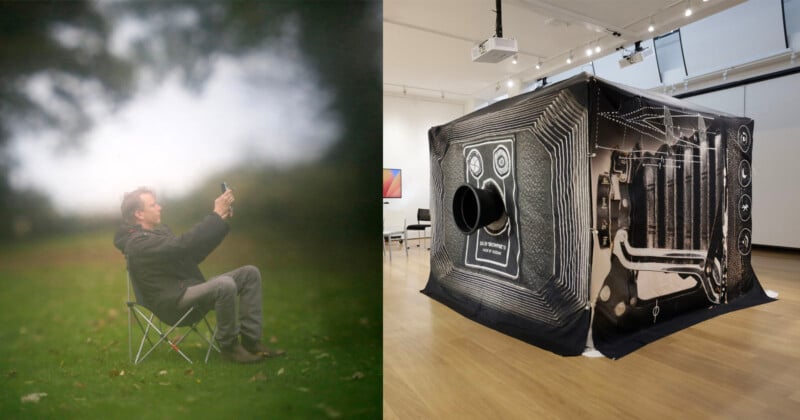
A photography teacher has created the world’s first camera obscura that people can take selfies with by using their smartphone.
David White of Falmouth University, U.K., made the 6×6 foot camera obscura out of a gazebo frame with a 790mm f/5.4 lens peering out into the world.
The image the lens captures is then projected onto a screen inside the camera obscura; the screen can be moved backward and forward until the image is in focus.
“It’s like being inside a camera, you can have a cup of tea in there if you want,” White, a senior lecturer on press and editorial photography and a professional photographer, tells PetaPixel.

Camera Obscura Selfie
But what makes this camera obscura unique is the ability to take selfies with it. White ingeniously placed a Canon camera inside the tent which photographs the screen and can be controlled remotely via an app on his iPad or smartphone.
“The person just sits in front of the obscura looking at their phone controlling the camera, they see themselves because the camera inside the camera is looking at the screen and they take a selfie,” he explains.

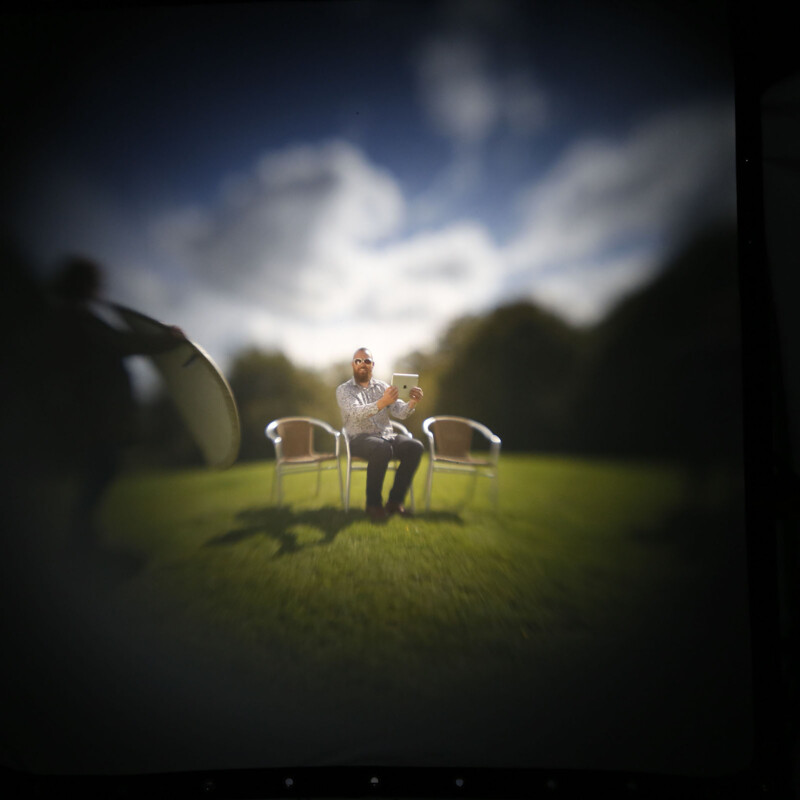
White says that it is the first-ever camera obscura that can take selfies and he built it for his students as a learning and teaching tool.
“[The reaction] is one of disbelief, and wonder, and amazement when they go inside because there are not many cameras you can go inside of,” he says.
“And then it elevates once they take a selfie and then it elevates again because once I explain they are the author of the selfie therefore they own the copyright to the selfie and they can distribute it, share it, sell it, do whatever they like with it.”
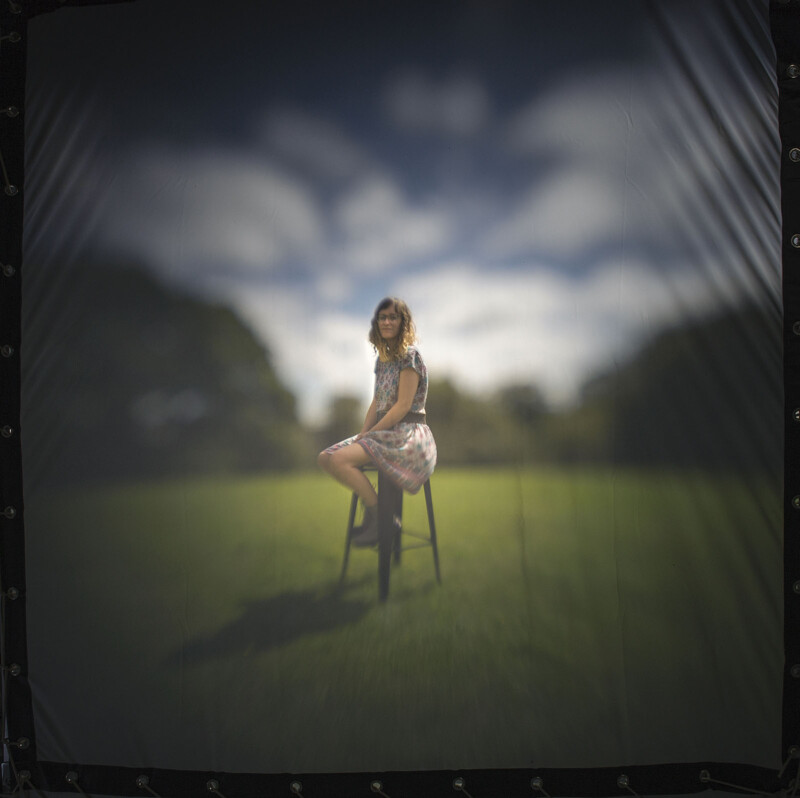
Building the Camera Obscura
White has actually built two of these selfie camera obscuras; the second one he adorned with a beautiful fabric that has camera parts printed on it.
“It looks like a huge camera now…You enter through a light meter,” he adds.
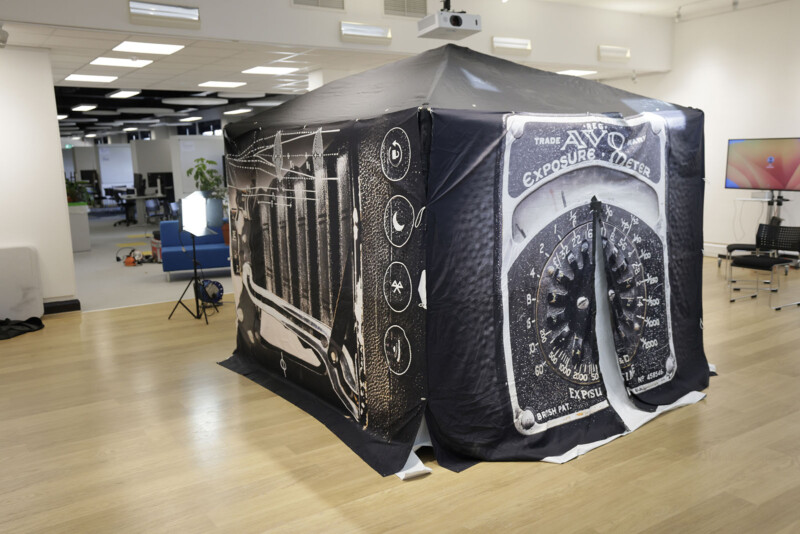
The most expensive part was the focusing screen, but White found a second-hand one on eBay and then there’s the matter of the lens.
“The lens was problematic because it needed to cover a larger area — like six-foot square — and there’s not really a need for a lens that covers that kind of area because there’s no film that size or digital sensor that size,” he explains.

![]()
But he found an ultra-large format photography specialist called Reinhold Schable in the United States and asked if he could make him a lens.
“He made me a single-element Woolaston meniscus lens which is one of the earliest forms of optics known to man, he hand-grounded it for me and made it so it covered the area that I needed,” says White.
“He charged me $400 which is quite frankly the biggest bargain of my life.”
Plans and Usage
The selfie camera obscura has been a huge hit — and not just with White’s students; noted documentary photographer Martin Parr stopped by to take a novel self-portrait.
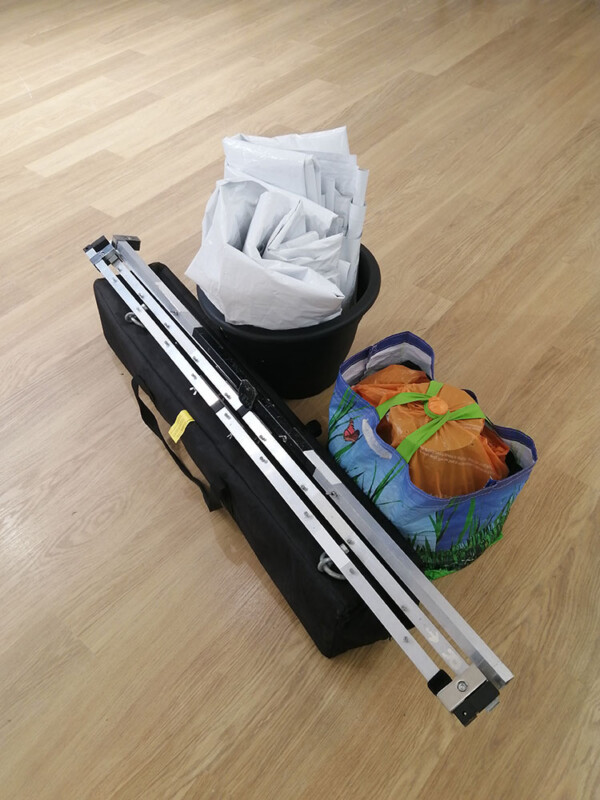
The camera obscura is compact and lightweight which means it’s easily transported, but that means it could blow away in the wind.
“Because it’s lightweight it doesn’t work so well outdoors unless it’s a perfectly still day,” says White.
The photographer adds that if he were to build a new one it would be inflatable so it might work better on the often windy British Isles.
